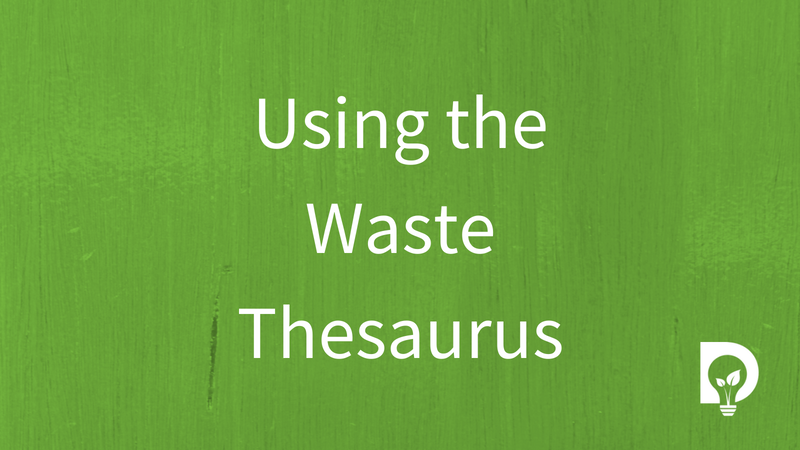
The Waste Thesaurus helps to signpost people to the right reference code for their waste. These reference codes are called European Waste Catalogue codes (EWC Codes, or you might know them as LoW Codes). They can be confusing and are written in a language that few fully understand or use. That’s why Dsposal built the Waste Thesaurus - think it as an EWC Code Checker.
In this article, you'll learn how to use the Dsposal Waste Thesaurus.
Before You Start
Here are some things to know before you begin this process.
- The reference codes of waste are called European Waste Catalogue codes; read this What is an EWC Code? article to find out more.
- You do not need to register for an account to view the waste thesaurus.
- The Dsposal Waste Thesaurus is provided as general information for your use of Dsposal. You should obtain professional advice before taking any action on the basis of the content provided as stated in our Terms of Use.
What is the Dsposal Waste Thesaurus?
A thesaurus is a book that lists words or phrases into groups of words and phrases that mean exactly or nearly the same as that original word. The Dsposal Waste Thesaurus does the same but for different types of waste.
The Dsposal Waste Thesaurus is a reference database that lists types of wastes grouped together according to a relevant EWC Code. The purpose of this refuse thesaurus is for users to find the right EWC Code or codes by which waste may be most fitly and aptly described. This means that it is easier to find the right code for your waste.
Dsposal Waste Thesaurus Example
During the metalworking process cutting fluids are used to:
- keep the cutting tool at a stable temperature
- maximize the life of the cutting tip
- prevent rust on machine parts and cutters
However, these fluids degrade over time due to contaminants entering the lubrication system and they require safe transport and disposal. But which EWC Code best describes this cutting fluid?
Browsing through the European Waste Catalogue there is no entry for cutting fluid. Using an online search engine there are different names for cutting fluid. Including:
- coolant
- cutting oil
- cutting compound
- heat transfer fluid
- lubricant
- tramp oil
- sump oil
- soluble oil
- machining lubricant
None of which are an entry in the EWC Code list either. Using the Dsposal Waste Thesaurus makes deciding on the most appropriate code easier.
Step 1
By heading to the Dsposal compliance pages and typing in cutting fluid, choosing the EWC Codes and pressing search our system. This will search our database of the EWC Codes and Waste Thesaurus entries and return the results.
The results page contains all the different chapters, sub-chapters, entries and waste thesaurus keywords. This can be a long list and confusing list. Reducing the amount of results that are returned helps to find the correct EWC Code.

Step 2
The next step would be to determine the correct chapter. For cutting fluid in the metalworking process the most likely chapter would be chapter 12 - wastes from shaping and physical and mechanical surface treatment of metals and plastics. On the filters menu click choose filter chapter, find 12 and click update. This has reduced the number of possible options.

Step 3
Now by looking at the individual entries there seems to be a number of different entries which cover cutting fluids depending on if it is mineral-based, synthetic, neat, biodegradable or halogenated. Determining the correct waste code is based on the waste producer’s processes. If the process diluted the oil and doesn’t contain chlorine/chlorides, then the likely hood is that the waste is 12 01 09*. Clicking on the entry shows a synopsis of that code:
- The Chapter number with description
- The Sub-Chapter number with description
- The EWC Code Individual Entry with description and additional information
- The different Dsposal Waste Thesaurus keywords that relates to this entry



